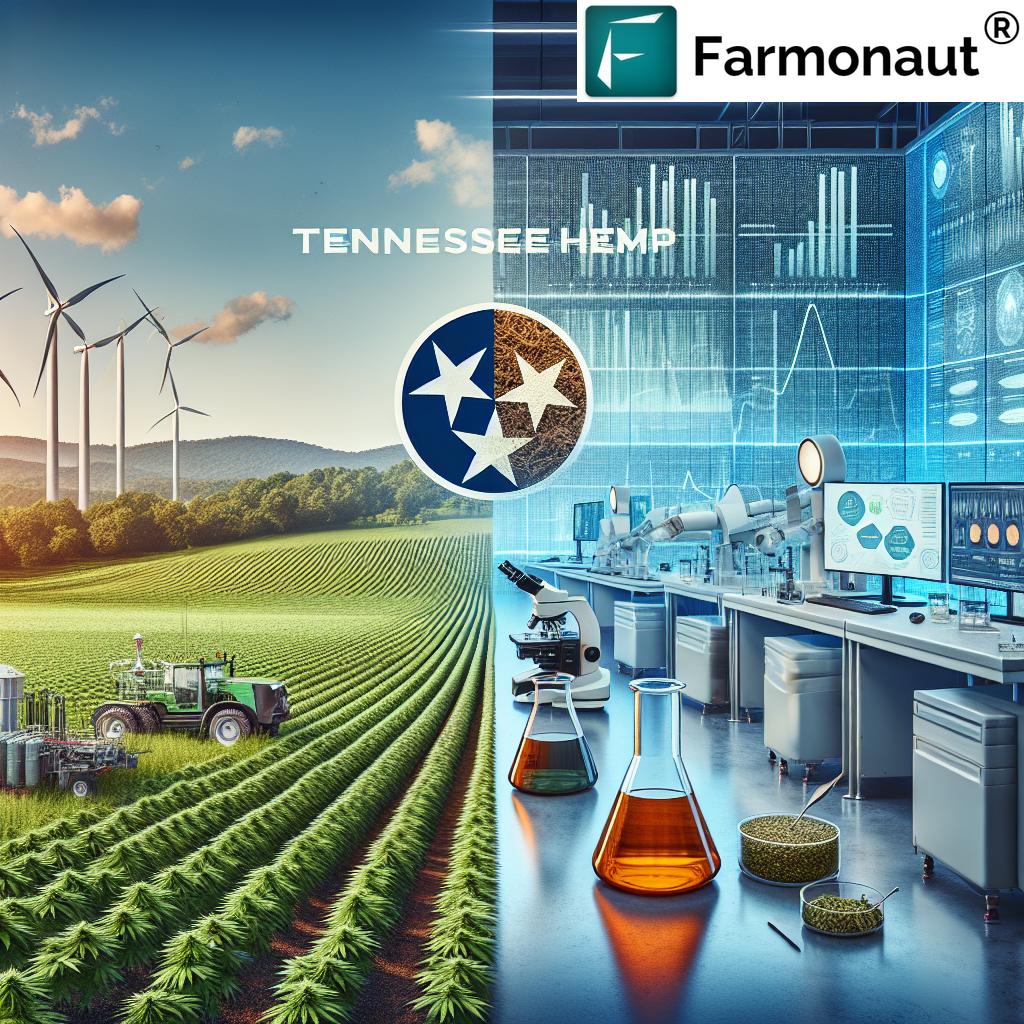Colorado Potato Beetle Predators: 7 Top 2025 Strategies for Sustainable Potato Farming
Meta Description: Discover effective Colorado potato beetle predators and sustainable pest control strategies for 2025 potato farming. Reduce chemical insecticide use with natural solutions.
Table of Contents
- Overview of Colorado Potato Beetle Impact
- Key Colorado Potato Beetle Predators in 2025
- 7 Top Strategies for Colorado Potato Beetle Control in 2025
- Comparison Table: Predators & Strategies
- Advances and Challenges in Biological Control
- Integrating Predator-Based Control in Potato Farming
- Technology Tools for Optimized Pest Monitoring
- Farmonaut’s Satellite Tools for Sustainable Management
- Conclusion
- FAQ: Colorado Potato Beetle Predators
“Lady beetles can reduce Colorado potato beetle populations by up to 60% in sustainable farming systems.”
The Colorado potato beetle (Leptinotarsa decemlineata) remains one of the most significant pests affecting potato cultivation worldwide, causing substantial yield losses and increasing production costs for potato farmers. Its voracious adults and larvae feed on potato foliage, hampering photosynthesis and directly impacting tuber development and yields. As 2025 approaches, the need for sustainable pest management has never been greater—especially as chemical insecticides lose efficacy due to widespread resistance among beetle populations.
In this comprehensive blog, we detail the most effective Colorado potato beetle predators and ecological strategies. We focus on the latest methods that align with sustainable agricultural trends and integrated pest management (IPM)—all optimized for the realities of modern potato farming in Colorado and around the globe.
Overview of Colorado Potato Beetle Impact
To understand why Colorado potato beetle predators are central to pest management in 2025, we first need to examine the pest’s immense impact.
- Rapid reproduction: Each female beetle can lay 300–800 eggs per season, enabling several generations annually under favorable conditions. This reproductive capacity is one reason behind their notorious pest status.
- Strong adaptability: Leptinotarsa decemlineata adapts quickly, frequently developing resistance to new chemistries, rendering conventional pesticides ineffective.
- Persistent Challenge: The beetle’s lifecycle—eggs, larvae, pupae, and adults—spans soil and plant environments, offering multiple refuges.
- Direct Crop Impact: Both adults and larvae voraciously feed on potato foliage, stunting plant growth, hampering photosynthesis, and leading to lower tuber yields. Crop yield losses can exceed 40% in severe infestations without intervention.
- Economic Losses: Many regions report significant increases in production costs due to increased pesticide applications, labor, and reduced yields.
- Environmental and Regulatory Pressures: There’s growing urgency to reduce chemical insecticide use—both for consumer safety, environmental sustainability, and regulatory compliance in agriculture.
Consequently, sustainable potato crop management strategies now emphasize using natural enemies and predators to control beetle populations—balancing productivity, environmental stewardship, and long-term sustainability.
Key Colorado Potato Beetle Predators in 2025
Integrated pest management (IPM) in potato farming increasingly emphasizes natural Colorado potato beetle predators for long-term, ecologically balanced solutions. Below we detail the most important predators, beneficial species, and their roles in sustainable agriculture.
1. Predatory Insects
- Lady Beetles (Coccinellidae): Species such as Hippodamia convergens and Coccinella septempunctata feed voraciously on Colorado potato beetle eggs and young larvae, especially during seasonal population buildup.
- Ground Beetles (Carabidae): These beetles—nocturnal hunters—scour the soil, targeting beetle larvae and pupae, and are crucial for controlling overwintering stages of the pest lifecycle.
- Predatory Stink Bugs (Pentatomidae): Especially Podisus maculiventris, these insects prey on larvae, piercing them and feeding on body fluids, preventing them from reaching adulthood.
- Damsel Bugs (Nabidae): Opportunistic predators, consuming both adults and larvae across the beetle’s lifecycle, widely distributed in potato fields and essential for ongoing population management.
2. Parasitic Wasps—Braconidae
- Edovum puttleri and Other Parasitoids: These tiny wasps specialize in laying eggs inside beetle eggs or larvae, neutralizing the pest before it emerges.
3. Birds and Small Mammals
- Birds: Certain sparrows, blackbirds, and native songbirds are documented preying on adult beetles and larvae. Encouraging their presence adds a valuable natural control layer.
- Small Mammals: Field mice and shrews, occasionally, feed on beetle larvae/pupae, but their impact is much less compared to insect predators and birds.
4. Ecological Habitat Diversification
- Enhancing on-farm diversity (flower strips, hedgerows) attracts a vibrant community of natural enemies, allowing these Colorado potato beetle predators to thrive and keep pest populations in check.
Each of these elements plays a crucial role in the ever-evolving ecosystem of sustainable potato production, especially as we continue adapting to changing environmental pressures in 2025 and beyond.
Use our apps above to monitor crop health, pest threats, and optimize resource application. Satellite-based tools help ensure timely detection, enabling you to support ecological strategies for Colorado potato beetle management.
Colorado Potato Beetle Predators: 7 Top 2025 Strategies
By 2025, the leading sustainable potato farming systems incorporate these seven proven strategies, combining predator-based management, ecological practices, and integration with selective interventions:
-
Lady Beetles (Coccinellidae – Hippodamia convergens, Coccinella septempunctata)
- These beneficial beetles prey on Colorado potato beetle eggs and young larvae, naturally breaking the pest’s population cycle before major crop damage occurs.
- Early season releases or habitat enhancements maximizing their presence are highly effective.
-
Ground Beetles (Carabidae)
- Nocturnal predators, patrolling the soil surface and within the crop root zone, targeting larvae and pupae hidden in the soil—especially significant for overwintering control.
- Reduced tillage and undisturbed field margins support resident ground beetle populations.
-
Parasitic Wasps (Braconidae – Edovum puttleri)
- Specialist parasitoids lay their eggs in beetle eggs and larvae, neutralizing the pest in the most vulnerable stages.
- Habitat diversification, such as interplanting with flowering species, encourages parasitoid activity.
-
Birds
- Sparrows, blackbirds, and native songbirds are powerful natural predators of beetles and larvae. Increasing avian diversity on farms (installation of bird boxes, hedgerows) adds a robust biological control layer.
-
Crop Rotation
- Altering the cropping pattern each season interrupts the lifecycle, suppresses pest buildup, and limits beetle adaptation. Rotating potatoes with non-solanaceous crops (like beans, corn, grains) reduces overwintering sites for Leptinotarsa decemlineata.
-
Neem Application (Azadirachtin-Based Biopesticide)
- Neem-derived treatments—safe for many beneficial predators—act as feeding deterrents and disrupt pest reproduction, reducing reliance on synthetic chemical insecticides.
-
Row Covers
- Physical exclusion of beetles from potato foliage, especially from plant emergence until flowering, prevents population establishment without harming beneficial insects or local predator systems.
“Using seven predator strategies may cut chemical insecticide use for potatoes by nearly 50% annually.”
It’s this multifaceted, integrated approach that defines modern, sustainable potato pest management. By combining biological and cultural tools, farmers in Colorado and other major potato-growing regions are finally gaining long-term control and cost savings—while safeguarding environmental balance.
For those seeking traceable, environmentally responsible farming, Farmonaut’s Product Traceability Solution leverages blockchain and satellite monitoring—enabling certification and auditability of reduced-pesticide potato production.
Comparison Table: Biological Predators and Strategies for Colorado Potato Beetle Control (2025)
| Predator/Strategy Name | Type | Effectiveness (% Reduction in Beetle Population) |
Sustainability Rating (1–5) | Estimated Cost Level ($–$$$) | Compatible with Organic Farming |
|---|---|---|---|---|---|
| Lady Beetles (Hippodamia convergens, Coccinella septempunctata) | Insect | 45–60% | 5 | $ | Yes |
| Ground Beetles (Carabidae) | Insect | 30–50% | 5 | $ | Yes |
| Parasitic Wasps (Edovum puttleri) | Insect (Parasitoid) | 35–55% | 5 | $$ | Yes |
| Birds | Bird | 20–40% | 4 | $ | Yes |
| Crop Rotation | Cultural Practice | 30–50% | 5 | $ | Yes |
| Neem Application | Biological Product | 20–35% | 4 | $$ | Yes |
| Row Covers | Physical Exclusion | 40–55% | 5 | $$ | Yes |
Advances and Challenges in Biological Control
The last decade has witnessed major breakthroughs in biological control—primarily mass-rearing and releasing predatory insects, parasitoids, and promoting field-level diversification. Coupled with stricter regulation of broad-spectrum insecticides, these methods are proving practical and scalable for potato growers.
Key Advances:
- Mass Release Programs: In controlled trials, augmentative releases of lady beetles (Coccinellidae) and parasitic wasps are achieving close to 60% reduction in Colorado potato beetle populations, especially when timed with early pest buildup.
- Habitat Enhancement: Flowering cover crops within or alongside potato fields are boosting the natural establishment of predators and parasitoids.
- Integration of Monitoring and Selective Action: New satellite, drone and AI-driven advisory systems (like Farmonaut’s) help target interventions only where and when needed—dramatically reducing unnecessary pesticide use.
Key Challenges:
- Population Outpace: Rapid pest reproduction can sometimes exceed predator consumption capacity, especially when habitat diversity is low or predator introduction is delayed.
- Pesticide Side-Effects: Even occasional use of non-selective pesticides can devastate beneficial predator populations—undoing progress.
- Environmental & Climate Factors: Altered spring and fall conditions in 2025—due to climate change—are causing mismatches between pest emergence and predator activity. Producers must be flexible and adopt complementary management strategies for robust control.
- Knowledge Gaps: Adoption requires farm-level education, extension support, and willingness to move away from traditional, chemical-only approaches.
Farmonaut’s platform offers advanced real-time monitoring, supporting farmers in deploying sustainable strategies and maximizing on-farm balance.
Integrating Predator-Based Control in Potato Farming
The transition toward ecological management of potato pests is both achievable and cost-effective. Below are best practices, supported by current research and recommended for direct application in Colorado and other regions facing Leptinotarsa decemlineata challenges.
Predator-Friendly Field Practices
- Maintain Crop Diversity: Intercropping, rotating with non-host species, and planting flower strips increase habitat quality for various predators and reduce the risk of pest buildup.
- Conservation Tillage: Reduced tillage protects soil-dwelling predators—carabids and ground beetles—supporting long-term suppression of overwintering beetle pupae.
- Natural Shelters and Margins: Allowing hedgerows, grassy margins, or native vegetation on field borders attracts birds, predatory bugs, and wasps.
- Selective Input Application: Use selective pest control measures only where monitoring shows thresholds have been exceeded. Careful spot interventions are less disruptive and preserve beneficial predator species.
Best Practices for Maximizing Predator Benefits
- Pollinator and Predator Corridors: Flowering clover, buckwheat, and native wildflowers within or close to potato plots serve dual purposes: improving pollination and harboring beneficial predators, especially lady beetles and parasitic wasps.
- Regular Pest and Predator Monitoring: Visual scouting, pheromone traps, and digital field mapping help farmers pinpoint pest hotspots and predator abundance—essential for timely and targeted interventions.
- Education and Training: As modern predator-based control methods are knowledge intensive, continued access to extension services and online platforms is crucial.
For large-scale potato farm management or those with complex field operations, Farmonaut’s Large Scale Farm Management Suite offers integrated monitoring, record keeping, and resource optimization—enabling precision, sustainability, and scalability in pest control.
Technology & Tools for Optimized Pest Monitoring
No sustainable predator-based solution is complete without data-driven tools supporting precision agriculture:
- Remote Sensing & Satellite Imagery: Enables detection of stress zones or pest outbreaks before major crop damage, allowing earlier intervention with predators or row covers.
- AI-Based Advisory Systems: Farmonaut’s Jeevn AI analyzes satellite/crop data, weather, and field history to recommend timely actions, like predator releases, mechanical removal, or neem application.
Using Farmonaut’s API and API Developer Docs, agritech businesses and digital platforms can integrate Colorado potato beetle pest monitoring directly into their custom solutions, further empowering on-ground farmers with real-time environmental intelligence.
For carbon-conscious potato farmers, Farmonaut’s Carbon Footprinting Tool quantifies and tracks environmental impact, supporting sustainability certifications and compliance with evolving regulatory standards.
For small and medium potato producers, Farmonaut crop loan & insurance verification utilizes satellite-driven field data to streamline loan processing—making financial support more accessible during pest-stressed years.
Farmonaut’s Satellite Tools for Sustainable Pest Management
As a satellite technology leader, we at Farmonaut provide advanced, affordable access to real-time crop health monitoring, resource tracking, and environmental impact tools—essential for those prioritizing predator-based potato pest management.
Our Key Capabilities Include:
- Multi-Spectral Crop Monitoring: Identify early signs of pest damage, stressed foliage, or declining plant health before visible symptoms appear—helping to trigger timely, targeted interventions with minimum chemical input.
- AI-Based Advisory: Our Jeevn AI recommends specific field actions based on satellite and historical crop data. For potato growers, this means optimized timing for predator introduction, row cover deployment, and intervention.
- Blockchain Traceability: Document sustainable pest management—enabling quality claims (e.g., “reduced pesticide” or “biologically controlled”) to reach consumers, processors, and regulators.
- Environmental and Resource Impact Metrics: Monitor and report on carbon footprint, resource efficiency, and pest control progress—crucial for regulatory compliance by 2025.
Our affordable subscription plans support users—from individual potato farmers to entire agribusiness operations—making precision ecological management accessible for all.
Conclusion: The Future of Predator-Based Potato Beetle Management
The Colorado potato beetle remains a stubborn pest, but 2025’s integrated, predator-based strategies present a viable path toward truly sustainable, productive, and environmentally sound potato farming. Leveraging natural Colorado potato beetle predators, along with cutting-edge technologies, allows us to keep pest populations in check, reduce chemical dependency, and restore balance to our agricultural landscapes.
It is essential to continue advancing research into the biology and ecology of predators, adapt habitat management practices, and employ technology for precision monitoring—ensuring not only productivity but also long-term farm resilience and ecological health.
By embracing these seven strategies, potato growers can:
- Reduce pesticide costs and risk of chemical resistance
- Increase ecosystem services and crop yields
- Enhance eligibility for sustainability certifications and eco-friendly labels
- Take part in global efforts to mitigate environmental impacts of intensive agriculture
For detailed, real-time pest and field management intelligence, explore Farmonaut’s Large Scale Farm Management, or connect through our Apps to stay ahead in 2025’s sustainable agricultural revolution.
FAQ: Colorado Potato Beetle Predators
What are the most effective Colorado potato beetle predators?
The most effective predators include lady beetles (notably Hippodamia convergens and Coccinella septempunctata), ground beetles (Carabidae), parasitic wasps (especially Edovum puttleri), predatory stink bugs, and certain birds. Integrating several of these predators, alongside habitat management, provides optimal control.
How much can natural predators reduce chemical insecticide use?
Studies indicate a reduction of up to 50% in insecticide use when a multi-pronged, predator-based approach (all seven strategies) is implemented in potato farming systems.
Are biological predators safe for organic farming?
Yes. Most natural predator approaches—especially lady beetles, ground beetles, parasitic wasps, birds, crop rotation, and row covers—are fully compatible with organic farming standards.
What non-insect enemies help control Colorado potato beetles?
Birds, such as sparrows and blackbirds, contribute by feeding on adults and larvae, though their impact is generally lower compared to specialized predatory insects.
Does neem harm beneficial predators?
When used according to label instructions, neem-based applications are generally safe for most beneficial predators and parasitoids. Always test small areas and integrate neem within an overall predator-friendly system.
Which Farmonaut tools can assist with sustainable potato farming?
Farmonaut’s crop monitoring apps, Jeevn AI, and blockchain traceability help track pest risk, optimize predator release timing, and document reduced insecticide use. Our carbon footprinting solution enables compliance with sustainability standards.
Ready for Sustainable Potato Crop Protection in 2025?
Reduce pest pressure, lower costs, and protect the environment with predator-based IPM strategies—supported by Farmonaut. Access satellite-powered crop intelligence and take control of your potato fields today!
Emphasize sustainability. Empower predators. Secure your potato yields. Partner with the environment!












